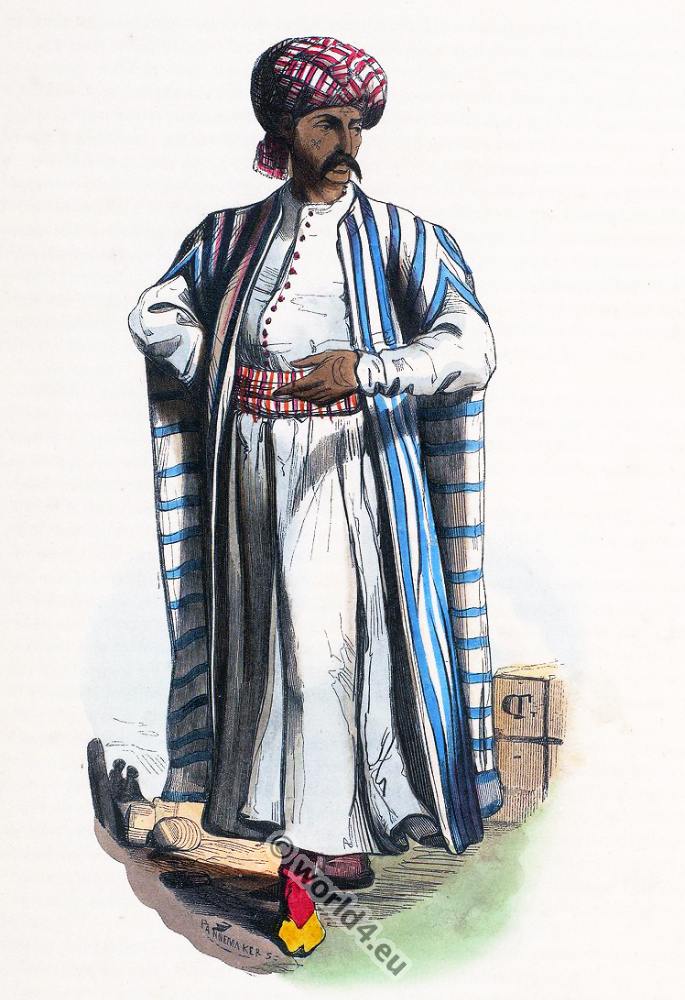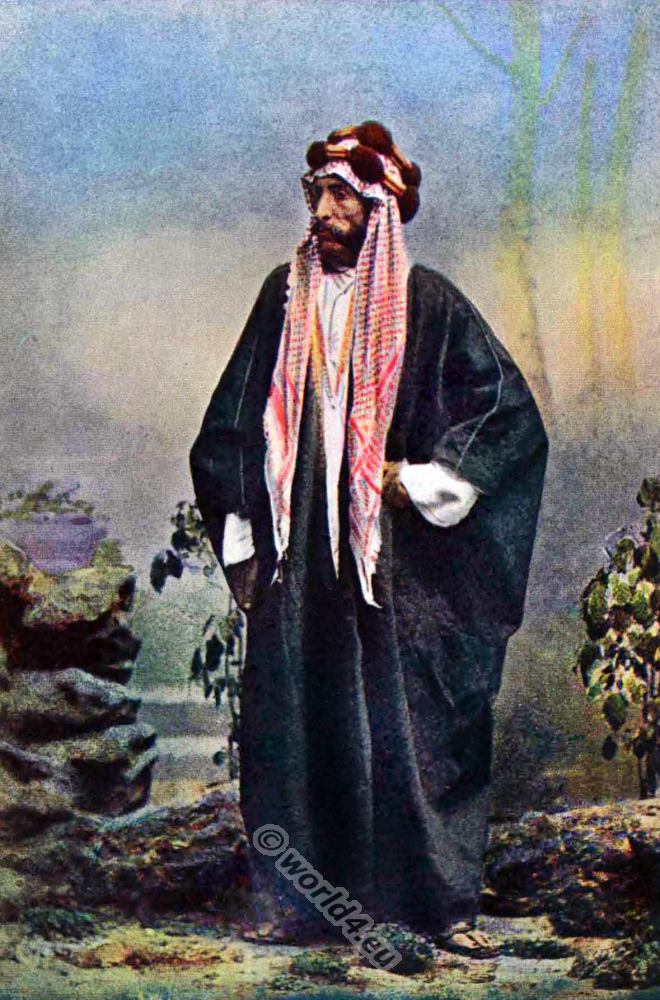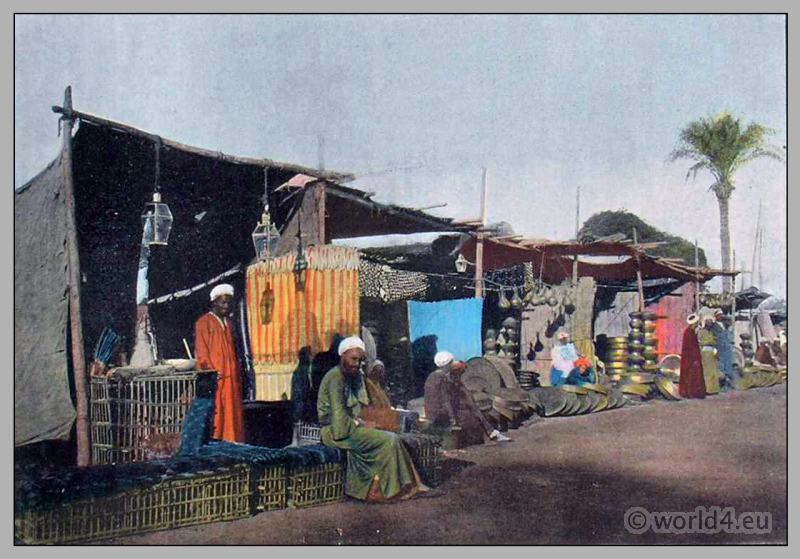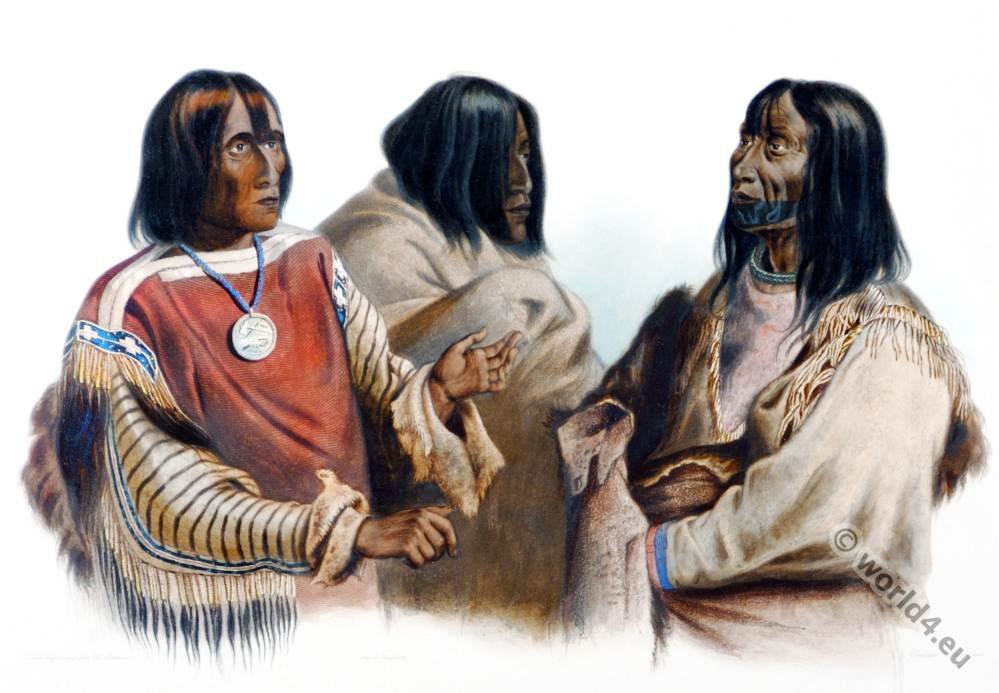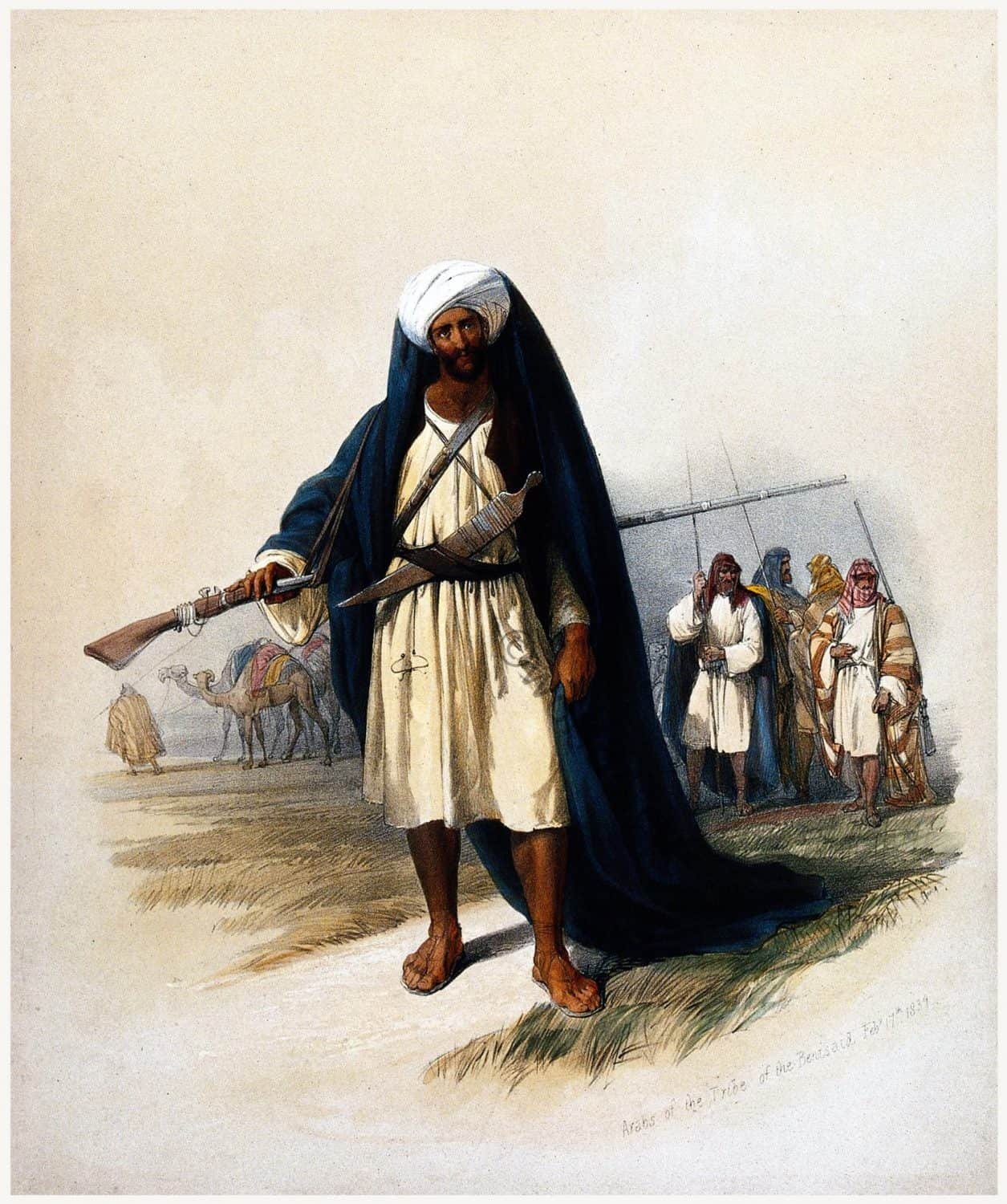
ARABS OF THE DESERT.
Besharah, of the Beni Said tribe.
Plate 69.
The principal figure is Besharah, an intelligent native of the Beni Said tribe, who accompanied Mr. Roberts from Egypt to Mount Sinai and Akaba.1)
The dress of all the Arab tribes who were met with on the route to Petra is nearly the same. Where the person is of rank, as in the present instance, the turban is worn but in general, a kerchief of gay colours, folded diagonally, is bound round the head by a fillet of dark worsted, or a cord,leaving the corners to fall over the neck and shoulders.
A coarse shirt, with loose sleeves, hanging to the knee, is gathered round the waist by a leathern girdle; over this is worn a large mantle of wollen stuff, striped in bands of white and brown. The legs and feet are generally without covering, but some wear sandals of fish-skin. They are all armed with a broad, crooked knife, about eighteen inches long, and a matchlock gun of the rudest construction.
1) Roberts’s Journal.
Source: The Holy Land, Syria, Idumea, Arabia, Egypt, & Nubia, by David Roberts, George Croly, William Brockedon. London: Lithographed, printed and published by Day & Son, lithographers to the Queen. Cate Street, Lincoln’s Inn Fields, 1855.
Related
Discover more from World4 Costume Culture History
Subscribe to get the latest posts sent to your email.

